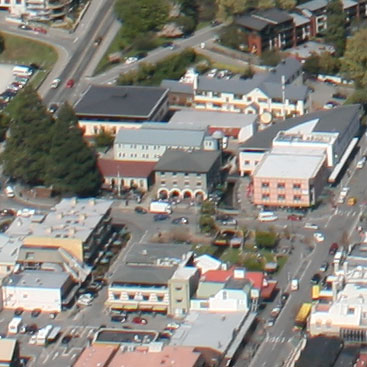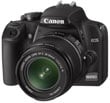Nikon D3100
-
-
Written by Gordon Laing
Quality
Nikon D3100 vs Canon EOS 550D / Rebel T2i Real-life resolution (default settings)
Nikon D3100 results : Real-life resolution / High ISO Noise
Nikon D3100 vs Canon EOS 1000D / Rebel XS Real-life resolution (default settings)
As explained above, the D3100 slightly over-exposed this composition, so to prevent the highlights from saturating, we applied -0.3EV compensation. The resulting exposure was 1/500 at 100 ISO with the lens set to f8 in Aperture Priority; the original Large Fine JPEG measured 6.49MB. Interestingly to match the brightness of the D3100 image, we had to shoot with a slightly slower shutter speed on the Canon EOS 1000D / XS – in this case 1/400 at f8 and 100 ISO. This implies the D3100 sensor is actually one third of an EV more sensitive than the 1000D / XS at the same ISO value – just like the EOS 550D / T2i above. The crops below are taken from the area marked with a red square and presented here at 100%; the 1000D / XS crops show a larger area because of its higher resolution. There’s another four Megapixel difference between the cameras here, but this time it’s 14 to the D3100 versus ‘just’ 10 for the budget Canon. Interestingly we used exactly same kit lens sample on both Canon bodies, and while the coloured fringing remains present on the 1000D / XS, the lower resolution of this model is more forgiving when viewed on-screen at 100%. That said, the D3100 avoids fringing altogether by simply eliminating it on in-camera JPEGs digitally. After the relatively high contrast and sharpness on the EOS 550D / T2i above, it’s interesting to see the 1000D / XS being a little more laid back here with its processing, delivering a style that’s not dissimilar to the D3100. But while there wasn’t much difference in resolved detail between the D3100 and EOS 550D / T2i above, there’s a clearer differentiation here. The Nikon D3100 is quite clearly resolving more real-life detail than the entry-level Canon, whether it’s in the buildings or the foliage. Couple this with the in-camera reduction of fringing and the Nikon D3100 comfortably out-performs its budget rival. To be fair, the EOS 1000D / XS costs less than the D3100, but the facilities and quality on offer will justify the expense for many. Now scroll down to see the benefits of shooting in RAW with the D3100. Alternatively head on to our Nikon D3100 High ISO Noise results page or if you’ve seen enough skip straight to our verdict.
|
Nikon D3100: JPEG versus RAW
| We photographed the scene above using the D3100’s RAW plus Large Fine JPEG mode, allowing us to directly compare images created from exactly the same data. Below are crops taken from the original JPEG file alongside the RAW version, processed in the optional Nikon Capture NX 2 software.When converted using the default settings (sharpness of 3), the RAW file was a fraction more contrasty than the in-camera JPEG – and looked better for it – but we wanted to see if the file would benefit from a little more sharpening. So the crops you see here were made using Capture NX’s default settings, but with the sharpness boosted a little from 3 to 4. Image processing settings are always a personal choice, but we’d say the D3100 certainly benefits from a little more contrast and sharpness. The difference in the crops below can be subtle at times, but overall the converted RAW version looks crisper without suffering from any undesirable artefacts. So if you’re after punchier, more consumer-friendly output from the D3100, consider either switching the in-camera Picture Style to Vivid, or better still, shoot in RAW and experiment with the settings in programs like Capture NX.  Now it’s time to check out the camera’s low-light performance in our Nikon D3100 High ISO Noise results page or if you’ve already seen enough skip straight to our verdict. |
Nikon D3100 (JPEG using in-camera defaults) with Nikkor DX 18-55mm VR | Nikon D3100 (RAW with Capture NX2, sharpness 4) with Nikkor DX 18-55mm VR | |
 | ||
f8, 100 ISO | f8, 100 ISO | |
 |  | |
f8, 100 ISO | f8, 100 ISO | |
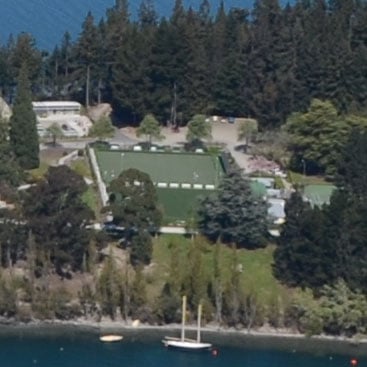 | 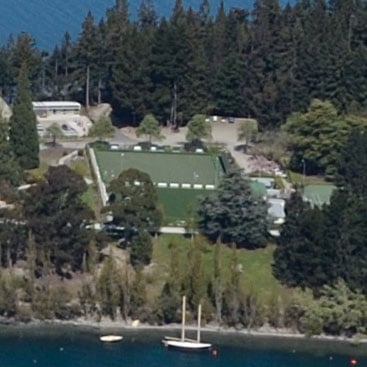 | |
f8, 100 ISO | f8, 100 ISO | |
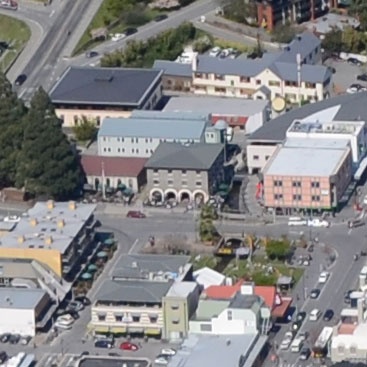 | 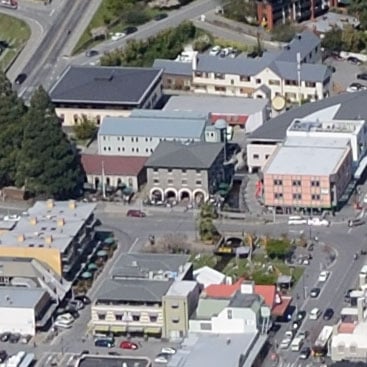 | |
f8, 100 ISO | f8, 100 ISO |
Nikon D3100 results : Real-life resolution / High ISO Noise
| ||
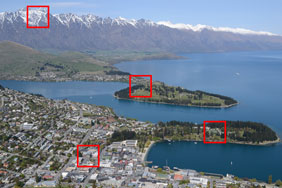 | To compare real-life performance we shot the same scene with the Nikon D3100 and Canon EOS 550D / T2i within a few moments of each other using their best-quality JPEG settings and and base sensitivities. Scroll down for a comparison against the Canon EOS 1000D / XS.Both cameras were fitted with their respective kit lenses: the D3100 with the Nikkor DX 18-55mm VR and the 550D / T2i with the EF-S 18-55mm IS. Both were set to f8 and focused on the target area using magnified Live View. |
Like most Nikon DSLRs we’ve tested, the D3100 slightly over-exposed this composition, so to prevent the highlights from saturating, we applied -0.3EV compensation. The resulting exposure was 1/500 at 100 ISO with the lens set to f8 in Aperture Priority; the original Large Fine JPEG measured 6.49MB. Interestingly to match the brightness of the D3100 image, we had to shoot with a slightly slower shutter speed on the Canon EOS 550D / T2i – in this case 1/400 at f8 and 100 ISO. This implies the D3100 sensor is actually one third of an EV more sensitive than the Canon at the same ISO value. The crops below are taken from the area marked with a red square and presented here at 100%; the 550D / T2i crops show a smaller area because of its higher resolution.
With four Megapixels between them, you’d expect the Canon EOS 550D / T2i to enjoy a significant advantage in resolved detail, but at first glance, the major differences below are in terms of lens aberrations and default processing styles.
As we’ve seen many times before, the Canon EF-S 18-55mm IS kit lens suffers from coloured fringing around areas of high contrast, especially near the edges, and this is clear to see in the mountain ridge, not to mention the boat in the third row of crops. Now this isn’t to say Nikon has miraculously cured its kit lens of chromatic aberrations, but the company has long been employing digital reduction of fringing on in-camera JPEGs, and its effectiveness is plain to see. To be fair, Canon also offers digital reduction of chromatic aberrations, but you’ll need to be shooting in RAW and correct it after the event, whereas Nikon has been doing it automatically and without fuss for some time now.
Fringing aside, the other obvious differences between the two models here are their respective image processing strategies. The Canon EOS 550D / T2i is clearly applying greater sharpening and contrast by default for a punchier result, whereas the Nikon D3100, like its predecessor, is taking an unusually laid-back approach for a consumer-focused DSLR. Technically speaking, it’s no bad thing, as the D3100’s images here look very natural, although some photographers will definitely prefer them to be more vibrant, especially if they’re upgrading from a compact point-and-shoot.
Luckily it’s very easy to change the processing style using the D3100’s range of Picture Controls, so if you’re finding the default Standard mode a bit flat, just try Vivid instead. Alternatively tweak the Picture Control settings yourself, or of course shoot in RAW and apply them later as desired. That said we believe the D3100’s target audience would prefer their JPEGs a little punchier by default, so perhaps Nikon should tweak them for future models.
But what about actual resolved detail? The Nikon D3100 falls short of the Canon EOS 550D / T2i by four Megapixels, which certainly sounds like a lot, but judging from the crops below, there’s actually very little between them in real-life detail – at least with the kit lenses. Indeed while the Canon crops certainly show a smaller area due to its higher resolution, we can’t definitively point at an area and say ‘look, there’s obviously more detail there’. Fit the Canon EOS 550D / T2i with a higher quality lens and you will resolve a little more fine detail, but with the kit lens, there’s essentially nothing between it and the 14 Megapixel D3100.
So a great start for the D3100 in our tests, but how does it compare to Canon’s cheaper EOS 1000D / Rebel XS? Scroll down for a comparison, or further still to see the benefits of shooting in RAW. Alternatively head on to our Nikon D3100 High ISO Noise results page or if you’ve seen enough skip straight to our verdict.
Nikon D3100 (JPEG using in-camera defaults) with Nikkor DX 18-55mm VR | Canon EOS 550D / T2i (JPEG using in-camera defaults) with Canon EF-S 18-55mm IS | |
 |  | |
f8, 100 ISO | f8, 100 ISO | |
 |  | |
f8, 100 ISO | f8, 100 ISO | |
 | 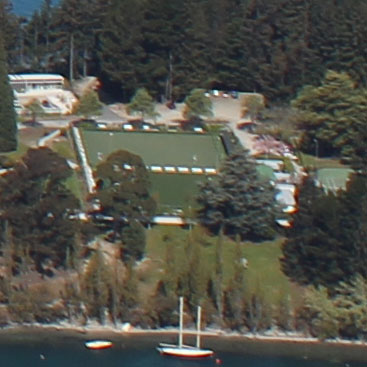 | |
f8, 100 ISO | f8, 100 ISO | |
 | 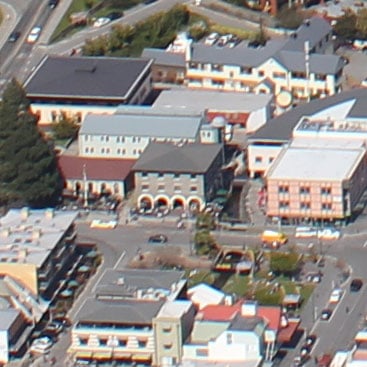 | |
f8, 100 ISO | f8, 100 ISO |
Nikon D3100 vs Canon EOS 550D / Rebel T2i High ISO Noise (default settings)
Nikon D3100 results : Real-life resolution / High ISO Noise
Nikon D3100 vs Canon EOS 1000D / Rebel XS High ISO Noise (default settings)
The image above was taken with the Nikon D3100 at 100 ISO with an exposure of 0.6 seconds and with the lens set to 24mm f8; the original Large Fine JPEG measured 4.99MB. The Canon EOS 1000D / XS again metered a slightly shorter exposure, so we applied +0.3EV compensation to match the exposures from the D3100 – so below you’re looking at images taken at the same ISO value, aperture and shutter speed, so any difference in brightness is due to a difference in actual sensitivity. The crops below are taken from the area marked with a red square and presented here at 100%; the 1000D / XS crops show a larger area because of its lower resolution. High ISO Noise reduction was set to the default Standard on both cameras, but the Nikon’s Active D-Lighting and the Canon’s Auto Lighting Optimizer were both disabled as they can artificially introduce noise. In the comparison below, there’s another four Megapixel difference between the bodies, but this time the advantage in numbers goes to the Nikon with 14 Megapixels to the 10 of the budget Canon. At 100 and 200 ISO, both cameras are essentially noise-free, but the Canon 1000D / XS takes a noticeably softer approach to image processing – its crops at the same exposure settings are also darker than the Nikon, implying a lower actual sensitivity, and this all adds-up to a muddier-looking result. The D3100 is resolving visibly greater detail and delivering a preferred result overall. At 400 ISO, noise is beginning to appear on the Canon, and its downhill from there. The maximum sensitivity of the 1000D / XS is 1600 ISO, and at this point there’s no competition: the D3100 avoids the chroma noise and smeared details of its budget rival to deliver a far superior result, and don’t forget it then goes on to offer 3200, 6400 and even 12,800 ISO options. To be fair, the Canon 1000D / XS is using an ageing sensor which was first seen in the 400D / XTi over four years earlier. Sensor technology has moved on significantly since then, and Canon’s entry-level DSLR is looking dated compared to its new rival from Nikon. Again to be fair, EOS 1000D / XS is cheaper than the D3100, not to mention two years older, but when comparing the quality of these two ‘entry-level’ DSLRs, the Nikon D3100 easily takes the lead.
|
Nikon D3100 results : Real-life resolution / High ISO Noise
|
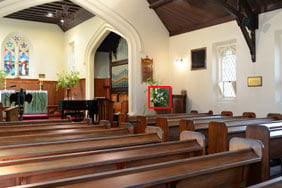 | To compare noise levels under real-life conditions we shot this scene with the Nikon D3100 and Canon EOS 550D / T2i within a few moments of each other using their best-quality JPEG settings and at each of their ISO settings. Scroll down for a comparison against the Canon EOS 1000D / XS.Both cameras were fitted with their respective kit lenses: the D3100 with the Nikkor DX 18-55mm VR and the 550D / T2i with the EF-S 18-55mm IS. Both were set to f8 and focused on the target area using magnified Live View. |
The image above was taken with the Nikon D3100 at 100 ISO with an exposure of 0.6 seconds and with the lens set to 24mm f8; the original Large Fine JPEG measured 4.99MB. The Canon EOS 550D / T2i metered a slightly shorter exposure, so we applied +0.3EV compensation to match the exposures from the D3100 – so below you’re looking at images taken at the same ISO value, aperture and shutter speed, so any difference in brightness is due to a difference in actual sensitivity.
The crops below are taken from the area marked with a red square and presented here at 100%; the 550D / T2i crops show a smaller area because of its higher resolution. High ISO Noise reduction was set to the default Standard on both cameras, but the Nikon’s Active D-Lighting and the Canon’s Auto Lighting Optimizer were both disabled as they can artificially introduce noise.
Both cameras start their sequences delivering very clean and detailed results as you’d expect. You may notice a small difference in brightness though, with the Canon EOS 550D / T2i crops appearing a little darker. Since both cameras employed the same aperture, shutter speed and ISO values below, this implies the Canon sensor is a little less sensitive than the Nikon – by approximately 0.25EV. In terms of resolved detail, there’s not much to choose between them, although pixel-peepers will spot a small advantage to the Canon.
At 200 ISO it’s the same story with both cameras remaining clean and detailed. At 400 ISO, pixel-peepers may notice very faint textures appearing in the Canon’s background, although arguably a tad more detail is retained. This is really minor stuff though and to all intents and purposes, both cameras deliver very usable and similarly detailed images at 400 ISO.
With the sensitivity doubled to 800 ISO, the background textures are increasing on both cameras, but again there’s very little to worry about. We would however say the D3100 has become a fraction softer than the Canon at this point. The 550D / T2i appears to be applying a little more contrast and sharpening at this point for a slightly punchier result.
At 1600 ISO, both cameras are exhibiting more noise, although the Nikon appears to be applying a little more noise reduction at this point – as such its image avoids some of the background artefacts of the Canon, but it’s losing a little fine detail as a result.
At 3200 ISO, both cameras take a visible turn for the worse with noise artefacts becoming more obvious and fine details gradually disappearing; the D3100’s colour balance also looks like its drifting a little. At 6400 ISO, there’s another big drop in quality and a difference in processing styles, although the D3100 has a small edge in resolved detail.
Finally at their maximum sensitivities of 12800 ISO, both cameras unsurprisingly look pretty ropey, although interestingly each has adopted very different approaches to coping with noise. Canon’s noise reduction has become quite splotchy, while Nikon’s left much of the noise patterns untouched for a grainy, but superior result.
From 100 to 400 ISO, we’d place both cameras – with their kit lenses – roughly neck in neck. From 800 to 3200 ISO, the Canon arguably enjoys a small edge, but at the maximum sensitivities, the Nikon claws it back. But look closely at the lower sensitivity samples and there’s really not much between them, especially when processing styles and image brightness are matched. Their four Megapixel difference sounds significant, but it’s actually fairly subtle in practice, especially when both are fitted with their kit lenses.
This is a good result for the D3100 as it roughly matches the detail of the 550D / T2i in our low-light tests at a lower price-point. Fit the Canon with a better lens and you can extract a little more detail from its high resolution sensor, but even then it’s not a huge difference from the Nikon.
The D3100 falls roughly between the EOS 550D / T2i and 1000D / XS in price, so keep scrolling down to see how Nikon’s body compares against Canon’s cheaper entry-level model. If you’ve already seen enough though, check out a selection of HD video clips on our Nikon D3100 HD video samples page.
Nikon D3100 (JPEG using in-camera defaults) with Nikkor DX 18-55mm VR | Canon EOS 550D / T2i (JPEG using in-camera defaults) with Canon EF-S 18-55mm IS | |
 |  | |
100 ISO | 100 ISO | |
 |  | |
200 ISO | 200 ISO | |
 | 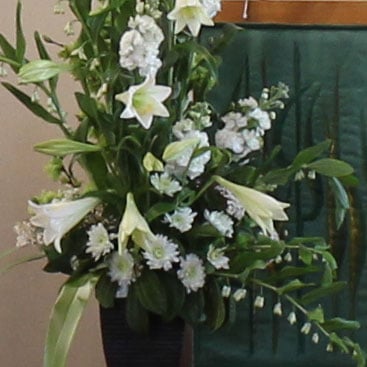 | |
400 ISO | 400 ISO | |
 | 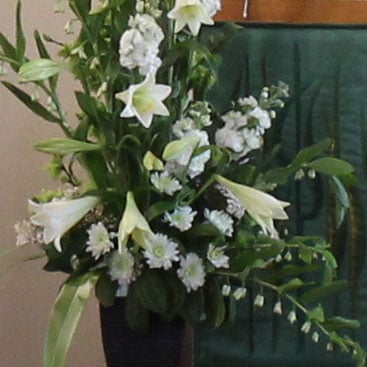 | |
800 ISO | 800 ISO | |
 | 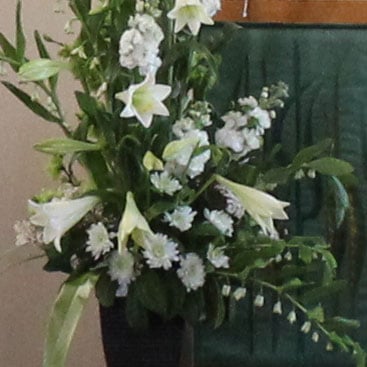 | |
1600 ISO | 1600 ISO | |
 | 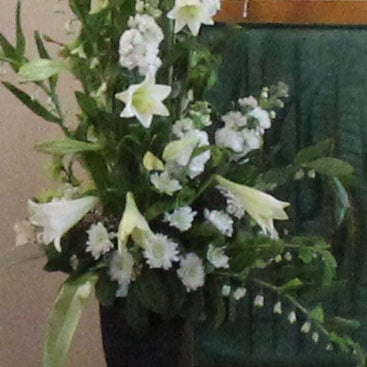 | |
3200 ISO | 3200 ISO | |
 |  | |
Hi 1 (6400 ISO) | 6400 ISO | |
 |  | |
Hi 2 (12800 ISO) | H1 (12800 ISO) |
Nikon D3100 video samples
Here are a selection of sample videos filmed with the Nikon D3100 using its DX 18-55mm VR kit lens and best-quality 1080p / 24fps movie mode. Registered members of Vimeo can download the original files by clicking the links below each window; these take you to the Vimeo page where the video is hosted and the link to download the actual file can be found under the ‘About this video’ section in the lower right. We used VLC Player to watch the MOV clips under Windows. Check out our Nikon D3100 Movie Mode page for full details on the camera’s video recording capabilities.
| |
|---|---|
|
In our first clip above the first thing to notice is the lack of vertical streaking around the sunlight reflections on the water – this is a benefit of a camera with a CMOS sensor. But if you’re playing the file with audio, you’ll almost immediately notice a faint squeaking or scratching in the background. This is the sound of the kit lens being refocused by the D3100’s continuous AF-F option, and it’s quite audible on this clip. Unfortunately in this example, the continuous autofocus isn’t doing a great job either, regularly searching for a subject with sufficiently strong contrast for it to lock onto. So while the actual video quality itself is fine, the continuous AF option hasn’t performed so well in this example; indeed disabling it would have probably produced better results. But before you write-off the D3100’s AF-F mode, check the clips below as it can work reasonably well under the right conditions. PS – at the end of the clip we’ve attempted to smoothly zoom the lens in and out, and as usual this is an almost impossible task with a handheld DSLR.
| |
|---|---|
|
In our second clip, above, we’ve locked the D3100 to a tripod, disabled VR and AF on the kit lens and smoothly panned from left to right. Despite being a little over-exposed (like the same shot in our Outdoor results page), there’s plenty of detail here, and we’ve also paused at the start in case you’d like to grab a frame for closer analysis. We also filmed the same sequence moments later in the three 720p modes, so if you’d like to compare them, check out our 720p / 24fps, 720p / 25fps and 720p / 30fps clips.
| |
|---|---|
|
Moving on, our third clip above was filmed handheld in a relatively dim bar with both VR and AF-F enabled, although thankfully the latter doesn’t appear as confused by the subject matter as in the first clip.
| |
|---|---|
|
Our fourth clip, above, deliberately put the new AF-F mode to the test. Here we moved the camera around, pointing it at various subjects near and far to see how the continuous autofocus coped. At first it doesn’t seem to do very well, refusing to focus on the coffee cup until the composition was readjusted. But give the D3100 some sharp edges for its contrast-based AF system to lock-onto and it can actually do quite a good job. Sometimes the focusing searches a little, but at others it feels more confident as it locks-onto the desired subject. Indeed as the clip progresses, it’s hard not to be quite impressed by the AF-F mode as it succeeds more than it fails. It may not be as consistent as a consumer camcorder, nor as confident as the phase-change AF on the Sony Alpha A33, but the D3100 still manages to keep the subject mostly focused as the composition changes, while the ambient background sounds mostly mask the kit lens’s AF motor. This is an impressive capability for a camera that only has a contrast-based AF system at its disposal while filming (along with the challenges of a shallower depth-of-field than a camcorder); remember Canon’s DSLRs don’t even attempt to continuously autofocus while filming, making this clip impossible without constant manual adjustments.
| |
|---|---|
|
In our fifth clip, above, we’ve given the D3100 a more predictable subject to track with its continuous AF. We zoomed the kit lens to 55mm, selected the D3100’s central AF point only, and kept it positioned over the Skyline logo on the cable car as it steadily approached. Like most contrast-based AF systems, the D3100 searches back and forth as it attempts to lock-on, and this is quite visible at several points during the clip. This is undoubtedly off-putting, but to be fair, the D3100 does manage to keep the logo relatively sharp throughout the clip, even when it’s only a meter or so distant. Once again this is something which would have required constant manual focus pulling on a Canon DSLR. So while the D3100’s continuous AF during filming may not live up to the experience of a consumer camcorder (nor the unique capabilities of the Sony Alpha A33), it remains a very impressive attempt given the available resources.




